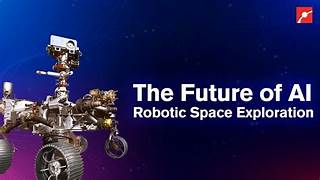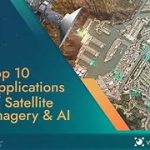AI-Driven Simulations for Space Mission Planning
Space exploration has always been one of humanity’s most ambitious and challenging pursuits. From sending rovers to Mars to planning manned missions to the Moon and beyond, every space mission requires meticulous planning and precise execution. This complexity is amplified by the vast distances, harsh environments, and high stakes involved. AI-driven simulations are emerging as a transformative technology in space mission planning, enabling agencies like NASA, ESA, and private companies such as SpaceX to optimize strategies, reduce risks, and achieve mission success with greater efficiency.
This article explores how AI-driven simulations are reshaping space mission planning, their key applications, challenges, and their potential to unlock new frontiers in space exploration.
1. The Role of Simulations in Space Mission Planning
Space missions demand rigorous planning to address numerous variables, including trajectory design, payload optimization, crew safety, and resource allocation. Simulations have traditionally played a critical role in:
- Predicting Outcomes: Simulations help scientists model potential scenarios and assess their feasibility.
- Risk Mitigation: Simulating missions allows teams to identify and address potential hazards before launch.
- Training: Astronauts and mission controllers use simulations to rehearse complex procedures.
However, traditional simulations often rely on static models and predefined assumptions, which may not fully capture the dynamic and unpredictable nature of space missions. AI-driven simulations bring a new level of adaptability and intelligence to these processes, enabling more realistic and actionable planning.
2. How AI Enhances Simulations for Space Missions
Artificial Intelligence enhances space mission simulations by introducing machine learning, predictive modeling, and real-time analysis capabilities. Key aspects include:
a) Dynamic Decision-Making
AI-powered simulations can model complex systems with multiple interacting variables. For instance:
- Trajectory Optimization: AI algorithms calculate optimal flight paths by considering gravitational forces, fuel constraints, and time efficiency.
- Landing Site Selection: AI evaluates terrain data to identify the safest and most scientifically valuable landing sites.
b) Predictive Analysis
Machine learning models can predict the outcomes of various mission scenarios based on historical data and real-time inputs.
- Weather Forecasting: AI predicts space weather, such as solar flares, to ensure the safety of spacecraft and astronauts.
- Equipment Reliability: Predictive models assess the likelihood of equipment failure and suggest maintenance schedules.
c) Real-Time Adaptability
AI simulations adapt to new data in real time, enabling mission planners to respond to unexpected developments. For example:
- During the Mars Perseverance rover landing, AI-assisted simulations helped adapt to changing atmospheric conditions.
3. Applications of AI-Driven Simulations in Space Missions
AI-powered simulations are being applied across various stages of space mission planning and execution.
a) Mission Design
AI helps design missions by simulating and optimizing parameters such as payload configurations, fuel requirements, and mission timelines.
- Case Study: NASA’s Artemis program, aimed at returning humans to the Moon, uses AI simulations to optimize rocket launches and lunar habitat designs.
b) Spacecraft Development
AI-driven simulations assist in testing spacecraft components under simulated conditions, reducing development time and costs.
- Engineers can simulate the effects of microgravity, radiation, and extreme temperatures on materials and systems.
c) Crew Training
For manned missions, AI simulations provide realistic training environments that replicate the challenges astronauts may face.
- Virtual Reality (VR) Simulations: AI-powered VR environments immerse astronauts in scenarios like docking with a space station or repairing equipment during a spacewalk.
d) Interplanetary Navigation
AI simulations enable spacecraft to navigate autonomously by modeling trajectories and avoiding obstacles such as asteroids.
- The European Space Agency’s (ESA) Rosetta mission used AI simulations to navigate and land on a comet.
e) Resource Allocation
Simulations help optimize resource allocation for long-duration missions.
- AI models predict food, water, and oxygen consumption for crewed missions, ensuring efficient use of supplies.
4. Key Technologies Enabling AI-Driven Simulations
Several advanced technologies underpin the success of AI-driven simulations in space mission planning:
a) Machine Learning Algorithms
- Reinforcement Learning: AI models learn optimal strategies through trial-and-error simulations, improving navigation and task execution.
- Neural Networks: Deep learning models process vast amounts of data, such as planetary images and sensor readings, to make informed predictions.
b) High-Performance Computing (HPC)
HPC systems enable the rapid processing of complex simulations, significantly reducing computation time.
- Supercomputers like NASA’s Pleiades and ESA’s Discoverer are integral to running AI-driven simulations.
c) Digital Twins
A digital twin is a virtual replica of a physical system, such as a spacecraft or planetary surface, used for simulation and analysis.
- AI enhances digital twins by enabling real-time updates and predictive capabilities.
- SpaceX uses digital twins to test rocket designs and simulate launches.
d) Big Data Analytics
AI-driven simulations process and analyze vast datasets from satellites, telescopes, and past missions to inform decision-making.
- For example, data from the Hubble Space Telescope is used to simulate interstellar mission scenarios.
5. Challenges in AI-Driven Simulations for Space Missions
Despite their potential, AI-driven simulations face several challenges:
a) Data Limitations
- Simulating unknown environments, such as distant exoplanets, requires accurate data, which is often unavailable or incomplete.
b) Computational Complexity
- Running high-fidelity simulations demands significant computational resources, which may not always be accessible.
c) Validation and Reliability
- AI models must be rigorously tested to ensure their predictions are accurate and reliable in critical mission scenarios.
d) Ethical Concerns
- Relying on AI for critical decisions raises ethical questions about accountability and the potential for unintended consequences.
6. Future Potential of AI-Driven Simulations
The future of AI-driven simulations in space exploration is promising, with potential advancements in several areas:
a) Interstellar Mission Planning
AI simulations will be crucial for planning missions to distant stars and galaxies, optimizing trajectories, and managing resources for decades-long journeys.
b) Colonization and Habitation
As humanity aims to establish permanent bases on the Moon and Mars, AI simulations will help design habitats, predict environmental challenges, and optimize resource utilization.
c) Autonomous Exploration
AI-powered simulations will enable spacecraft and rovers to explore unknown terrains independently, pushing the boundaries of human knowledge.
d) Collaboration with Quantum Computing
Integrating AI with quantum computing will further enhance simulation capabilities, allowing for the modeling of extremely complex systems.
7. Conclusion
AI-driven simulations are revolutionizing the planning and execution of space missions, offering unprecedented precision, adaptability, and efficiency. By modeling dynamic scenarios, optimizing resources, and mitigating risks, AI empowers mission planners to push the boundaries of space exploration. While challenges remain, ongoing advancements in AI, computing, and data analysis promise to unlock new possibilities for humanity’s journey into the cosmos.
As space agencies and private companies continue to embrace AI-driven technologies, we are poised to enter a new era of exploration, where the impossible becomes possible and the mysteries of the universe are unveiled.


